In the early seventies, truck makers DAF, Magirus-Deutz, Saviem, and Volvo joined forces to develop a new tilt cab for their light and medium-duty vehicles. The all-steel ‘Club of Four’ cab was designed in France -a logical choice- and would become a familiar sight all over the world for many years to come.
The heaviest and most powerful Volvo variant was the F7, introduced at the end of 1978. The number 20 in the model designation on the doors refers to the vehicle’s factory GVWR in tonnes.
Stefan Bloemen’s magnificent and fully period correct tractor is powered by Volvo’s TD70F inline-six. The turbocharged and intercooled, 6.7 liter diesel engine is good for 220 DIN-hp. The SR62 synchronized 16-speed transmission is another in-house component.
Not visible from the outside are the factory reinforcements of the whole cab structure, the result was that only Volvo’s Club of Four cab could meet the rigorous Swedish crashworthiness regulations. Safety ranked above weight reduction and cost savings. Noblesse oblige and all that.
As an afterthought, that’s another way to keep foreign competitors out. Just smash their flimsy cabs to smithereens and declare them unsafe. Which they were.
The classic cab suspension consists of rubber bushes at the front and coilovers at the rear.
I seriously doubt if this 10 liter tank, apparently supplied by the Schlösser brewery from Düsseldorf, was ever stated on Volvo’s options list.
Perfect, the big round fuel tank on the right side. Modern-era daily drivers come with rectangular tanks, simply because they can hold more diesel fuel than a round one with the same outer dimensions.
Steel suspension on both axles. Today’s 4×2 on-highway tractors will always have air suspension on the drive axle. Air suspension on the front axle is becoming more and more common, replacing the usual long parabolic leaf springs.
IKEA has nothing on these home furnishings. And for premium-quality meatballs you better go to a self-respecting truck stop, preferably a family business (interior pictures courtesy of BIGtruck online magazine).
It will roll alright. For many years to come.
Related article:
Car Carrier of the Day: All German, Even the Truck – Club of Four, Plus One by PN
















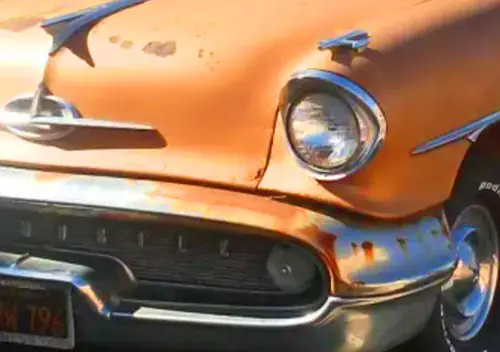
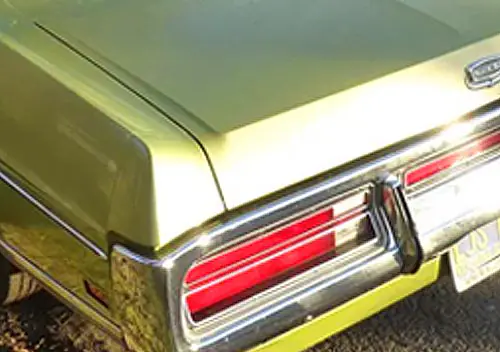
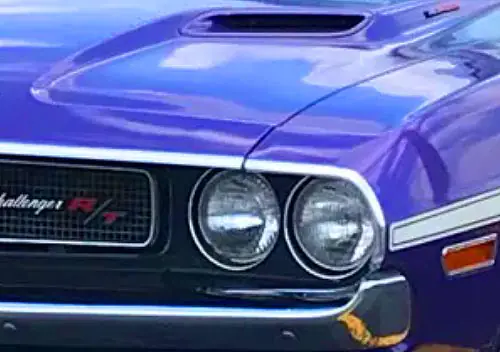


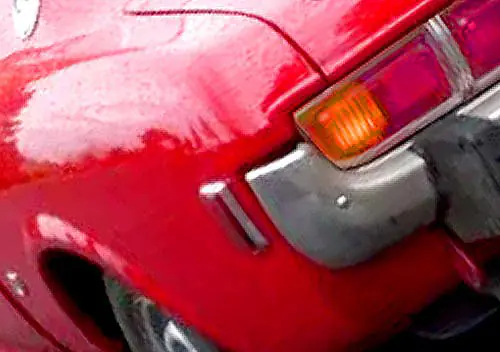

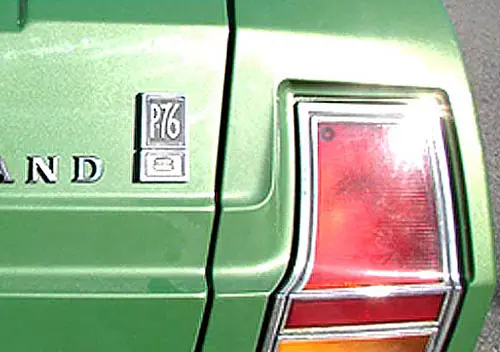
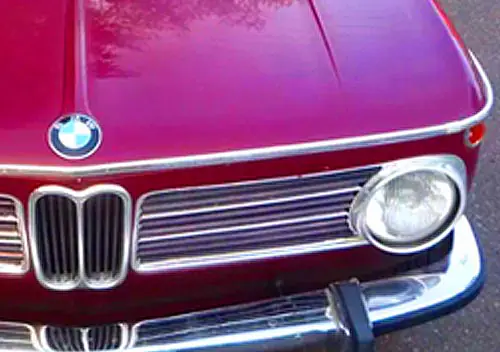

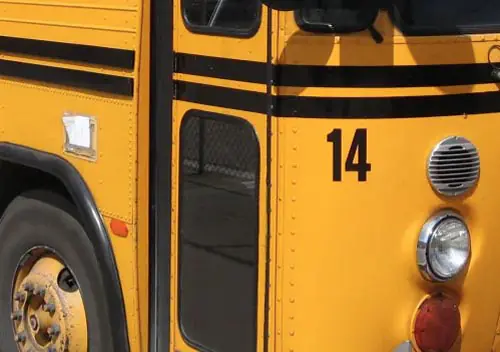
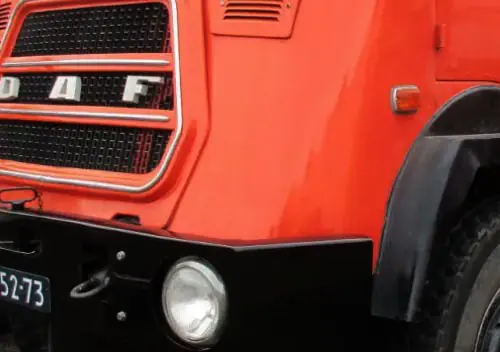
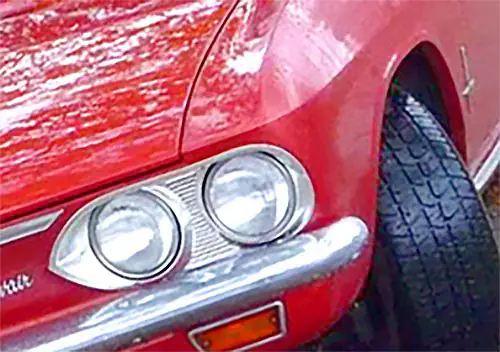
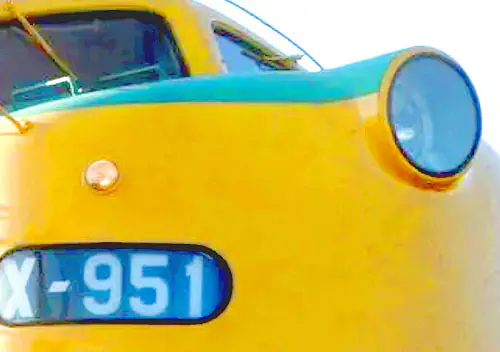
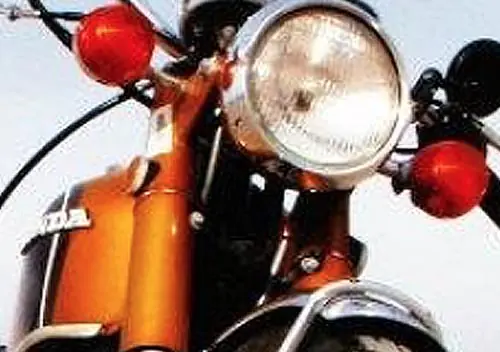
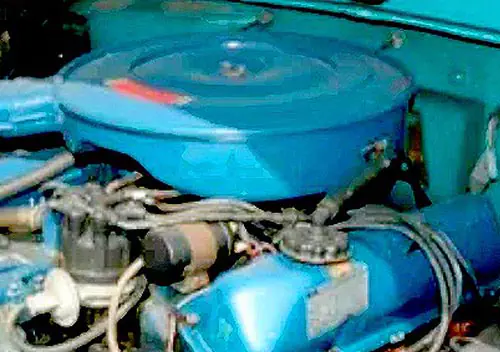
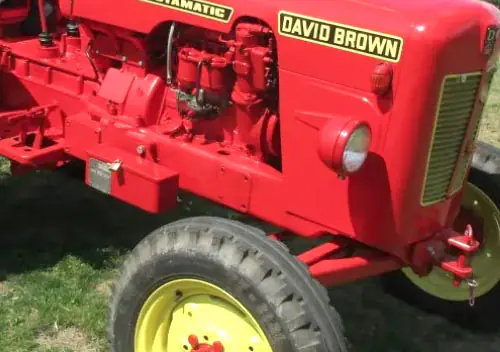


Great essay, Johannes. I like the information about how the Volvo cab is stronger than those of the other manufacturers who used this cab. Safety certainly is critical. When you see videos of trucks falling apart in some countries around the world from an impact, one can appreciate the reinforcement. I like the power train, too. TOUGH and practical. I caught the “Intercooler” badge on the front. Volvo was proud of this system. The badge showed up on their cars sent to The U.S. for a time.
‘Turbo’ and ‘Turbo Intercooling/Intercooler’ badges, cool indeed! As time went by, turbocharged and intercooled truck diesels became the norm across the whole trucking board, so the badges didn’t mean anything any longer. Out the window those badges went.
Saw a newish 700 volvo that took out a powerpole @ 90 kmh hit just to the left on centre the driver walked away, it was loaded at the time huge hit but they are still strong even now, I drove an old 7 series 8 wheeler rigid on grapes for a while good solid old truck and nice syncro box.
Interesting. The cabin feels very homely with these fine velour seats. Very unusual for a truck.
It seems to me to be the same velour fabric used for the Volvo 244/245 GL in MY 1982 – just with a different stitching.
1981 Volvo F7 brochure, interior picture on page 7.
https://public.fotki.com/modeltrucks25thscale/truck_brochures/volvo/volvo_f7_1981/f7-1981-01.html#media
Another great truck profile Johannes. Thank you! Love the classic design.
It epitomized everything about Volvo at the time, in both cars and trucks. The big brick.
Were synchromesh manuals common in European big trucks?? We NEVER had such a thing here in the states, even new manual trucks use an eaton fuller 18 speed, non-synchronized.
Neat tidbit about the volvo cab. I wonder how much more it weights??? I cant imagine it would have more than 500 pounds of extra steel in it
Roughly speaking, synchronized manuals in heavy-duty and powerful trucks have been the norm since the late seventies/early eighties over here, with Volvo and Scania ahead of the crowd. A famous one was and is the synchronized ZF 16-speed, used by all Euro truck makers that didn’t have an in-house transmission, like DAF and MAN.
But manuals are ‘old school’ by now anyway, the automated manuals have taken over the market for heavy trucks, like the ZF TraXon, Volvo I-Shift, and Scania Opticruise. The latest heavy DAFs, for example, AMTs only.
No idea about the exact extra weight of the cab reinforcements, but in some countries that bit of extra weight is crucial. I’m especially thinking of the UK in those days (utterly low gross weight limits).
ZF AMTs are very ordinary very slow thinking and shifting useless in steep country the waste momentum badly and you cant skip shift like in a roadranger manual, I was diving a 530hp Isuzu recently that had a ZF AMT fortunately all on flat running weirdly I drove a 500hp Iveco with ZF AMT and it was ok, that run had 3 big climbs on my run and it did ok.
I think they don’t do anything else than any other supplier: They deliver what the customer orders.
Yes Bryce, you already said that on May 17. And several times before that, and I already told you -multiple times- you’re probably mixing up the rather archaic ZF AS Tronic with their latest TraXon. That Iveco must have had the latter then.
On a related note, the brand new 660 hp DAF XG+ tractor for the Australian market comes with an AMT, standard. The manufacturer starts with a Z and ends with an F. I’ll give you one guess.
Swedish trucks never disappoint. The interior is beautiful. The brown seats match the cabin.
Remarkable, at least in my opinion, is the fact that this F7 was equipped with a long-distance cab (i.e., with a bunk).
Generally, the F10 and F12 series trucks were preferred for this purpose – while I remember the F7 being used mostly in local and regional duties..
Weight issues, see comment above. And naturally, an F7 was cheaper than an F10 or F12.
More power needed? For more than 40 to 45 tonnes gross weight (like in NL), the answer just had to be an F10/F12. A 220 hp, 6.7 liter turbodiesel simply wasn’t enough.
That interior brings back memories for sure, between 1987 and 1991 I was driving trucks across Europe, and the last truck I got to drive, after a DAF 2800 and a Scania 112, was a Volvo F10 with the exact same interior colors and vibe. Also the big buttons and ashtray look very familiar. Great truck to drive, with standard airconditioning, which was crazy luxurious for European trucks back then. The Volvo mainly brought me to Germany, former east-Germany, Poland and Czechoslovakia. We were driving for ACL back ten, also did a lot of hauling for the US Army, remember having containers with eggs being shipped to Kuwait to the troops fighting in the Gulf War.
You’ve been around!
About Volvo Trucks. Still a local, Swedish operation in the early sixties, and look at them now! Back then, they already knew that they had to go international/global to survive in the long run. And boy, they were so right. Speaking about ‘long term vision’.
It’s fascinating how Volvo’s partnership with other European truck makers led to a unique design like the F720. The tilt cab concept really must have been a game changer for improving driver access and visibility. This collaboration shows how innovation can stem from cross-brand cooperation.
No – you’d have to go back to Volvo’s 1960 TipTop cab for that!
Volvo already realised they’d need to go international, so ‘copied’ the US big-window tilt cabs of the time. Like the Ford and er, International…
The F7 was a modern (and very groovy orange) replacement for that F86 cab.
It’s quite amazing what Volvo truck became, almost from nothing.
A few of thsoe made it here to the states, but the cab was more commonly seen on the Mack (Renault) Mid-Liner. Mack also made a wonky conventional version, that despite it’s appearance was a pretty good truck.
The Mack used the original 2.1M wide version, like the Volvo F4.
The F7 and Renault G-Series had this 2.3M higher-datum version.
Being a distribution cab, it was a tad low-roofed compared to the full-size F10/12 cab.
Volvo, around 1980. From left to right: the narrow F4 Club of Four, the top model F12 (same cab as the F10), the wider F7 Club of Four, and the conventional N-series, already in a supporting role. (courtesy of Dutch Model Truck Club)
My overall childhood impression of the Mack tilt version is that it looked much more modern than the ancient Ford C and GM 72″ Steel tilt cabs.
Given the AMC connection through Renault, I wonder if Mack ever considered using the Jeep full size pickup cab rather than adapting the Club of Four to a conventional. I could see why it’d be rejected though since it was already 20 years old and there was no guarantee how much longer it’d be in production.
There was a more powerful version of the F7 cab. The Volvo CH230 was a hot rod of sorts using an F10 or F12 chassis with a raised F7 cab to meet the Swiss market’s need for a 2.3 meter wide cab with the heavier weight chassis. CH is the international code for Switzerland and 230 was the cab width in cm.
That’s correct Joe. Example below.
Source and more: https://www.facebook.com/groups/317068285462295/